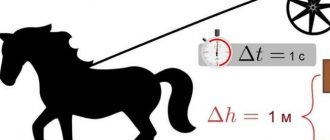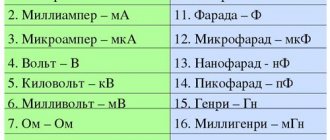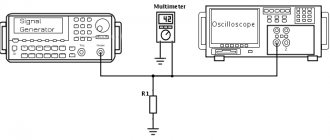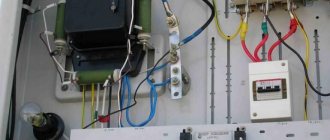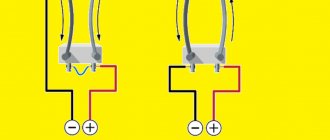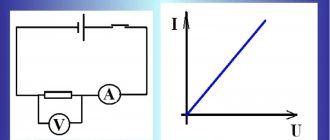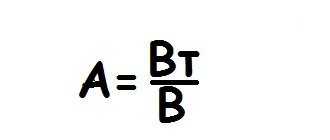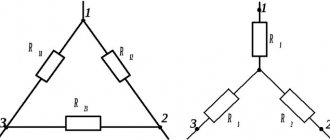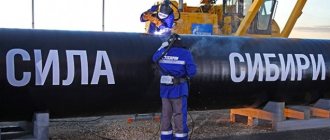How many kilowatts are in one horsepower and vice versa?
- 1 kW = 1.3596 hp (for metric calculus);
- 1 kW = 1.3783 hp (English standard);
- 1 kW = 1.34048 hp (electric “horse”).
As you can see, there are several units of measurement called “horsepower”, but, as a rule, what is meant is the so-called “metric horsepower”, which is equal to ≈0.7354 kW. But in the USA and Great Britain, horsepower in cars is equal to 0.7456 kW, that is, 75 kgf•m/s, which is approximately 1.0138 metric. If we convert the power of 1 horsepower to kilowatts in industry or energy, then ≈0.746. Therefore, for the accuracy of the result, before using our kW to hp power converter, decide which standard of horses you need to choose.
Background
Horsepower
(Russian designation: l.s.
;
English: hp
;
German: PS
;
French: CV
) is a non-system unit of power.
There are several units of measurement in the world called “horsepower”. In Russia, as a rule, by horsepower we mean the so-called “ metric horsepower”
", equal to exactly 735.49875 watts.
Currently, horsepower has been formally phased out in Russia, but is still used to calculate transport tax and compulsory motor liability insurance. In Russia and many other countries, it is still very widespread in environments where internal combustion engines are used (cars, motorcycles, tractor equipment, lawn mowers and trimmers).
FAQ
How many kilowatts are in one horsepower?
One metric horsepower is equal to 0.735 kilowatts (745.7 watts) when calculating engine power in kilowatts. How many kW are in 1 hp? calculated using the formula: power in kilowatts divided by a factor of 1.36.
How many hp in kW?
To convert horsepower to the kilowatt unit, you need to multiply its value by 0.735.
How much is 5 hp in kW?
According to metric calculus, where the ratio of 1kW is equal to 1.359 hp. - 5 horsepower is approximately equal to 3.68 kilowatts of power. If the calculation is carried out with an electric motor, then 5 hp will be 3.73 kW, because When operating an electric motor, the ratio should be used, where 1 kW = 1.34048 hp.
What is horsepower
- home
- Directory
- units of measurement
- Miscellaneous
- What is horsepower
What is 1 horsepower equal to? If we take any encyclopedia and look at it what horsepower is, we will read that this is an extra-system unit of power measurement that is not used in Russia. Although on any car dealer website the engine power is indicated in horsepower.
What kind of unit is this, what is it equal to?
Speaking about engine horsepower, most of us imagine a simple picture: if you take a herd of 80 horses and a car with an engine power of 80 hp, then their forces will be equal and no one will be able to pull the rope.
If you try to recreate such a situation in real life, then a herd of horses will still win, since in order for the engine to develop such power, it needs to spin the crankshaft to a certain number of revolutions per minute. The horses will rush off and drag the car behind them, thus breaking its gearbox.
In addition, you need to understand that horsepower is a standard unit of power, while each horse is individual and some individuals can be much stronger than others.
Horsepower was introduced into circulation back in 1789. Famous inventor James Watt wanted to demonstrate how much more profitable it was to use steam engines rather than horses to do the work. He simply took and calculated how much energy a horse spends in order to use a simple lifting mechanism - a wheel with ropes attached to it - to pull barrels of coal out of a mine or pump out water using a pump.
It turned out that one horse can pull a load weighing 75 kilograms at a speed of 1 m/s. If we convert this power into watts, it turns out that 1 hp. is 735 watts. The power of modern cars is measured in kilowatts, respectively 1 hp. = 0.74 kW.
To convince mine owners to switch from horse traction to steam, Watt proposed a simple method: measure how much work the horses could do in a day, and then connect the steam engine and count how many horses it could replace. It is clear that the steam engine turned out to be more profitable because it could replace a certain number of horses. The mine owners realized that it was cheaper for them to maintain a car than a whole stable with all the ensuing consequences: hay, oats, manure, and so on.
It is also worth saying that Watt incorrectly calculated the strength of one horse. Only very strong animals are capable of lifting a weight of 75 kg at a speed of 1 m/s; in addition, they will not be able to work for a long time in such conditions. Although there is evidence that for a short time one horse can develop power up to 9 kW (9/0.74 kW = 12.16 hp).
Types of horsepower
- Metric horsepower is equal to lifting 75 kg per second over 1 meter. Used in Europe
- Mechanical horsepower is 745.7. very rarely used as a unit of measurement in English-speaking countries
- Electric horsepower is 746 watts, sometimes indicated on electric motor nameplates.
- Boiler horsepower is 1000 kgf m/s. or 9.8 kW or 33,475 Btu/hour. (unit used in USA)
- Hydraulic horsepower is 745.7 watts.
How is engine power determined?
Currently, the easiest way to measure the actual power of an engine is with a dyno. The car is driven onto the stand, it is securely strengthened, then the driver accelerates the engine to maximum speed and the real power in hp is displayed on the display. Permissible error - +/- 0.1 hp. As practice shows, it often turns out that the rated power does not correspond to the real one, and this may indicate the presence of a variety of malfunctions - from low-quality fuel to a drop in compression in the cylinders.
It is worth saying that due to the fact that horsepower is a non-systematic unit, it is calculated differently in different countries. In the USA and England, for example, one hp. is 745 watts, not 735 as in Russia.
Be that as it may, everyone has already become accustomed to this particular unit of measurement, since it is convenient and simple. In addition, hp used when calculating the cost of compulsory motor liability insurance and comprehensive insurance.
Agree, if you read the car's characteristics, the engine power is 150 hp. — it’s easier for you to figure out what he’s capable of. But a record like 110.33 kW won’t say much. Although converting kilowatts to hp. quite simple: divide 110.33 kW by 0.74 kW, we get the required 150 hp.
I would also like to remind you that the concept of “engine power” itself is not very indicative; other parameters must also be taken into account: maximum torque, revolutions per minute, vehicle weight. It is known that diesel engines are low-speed and maximum power is achieved at 1500-2500 rpm, while gasoline engines accelerate longer, but show better results over long distances.
MiscellaneousPower Strength Units Money Directory
More interesting things in telegram @calcsbox
How are HP measured? in Russia and other countries
At the moment, there are several types of units with this name all over the world.
Main varieties:
- metric equal to 735.4988 W;
- mechanical, equal to 745.699871582 W;
- indicator, equal to 745.6998715822 W;
- electric, equal to 746 W;
- boiler equal to 9809.5 W.
The official international unit for calculating power is the Watt.
In many European countries, the so-called “metric” horsepower is used, calculated as the power spent on lifting an object weighing 75 kg at the same speed with a standard acceleration g = 9.80665 m/s².
Its value is considered equal to 75 kgf m/s or 735.49875 W.
Engine power
To measure the power of internal combustion engines of vehicles, not only various indicators are used, but also measurement techniques that produce different results from each other.
In Europe, the standardized unit of power measurement method is the kilowatt. When specifying horsepower, the way it is measured in different parts of the world can vary markedly, even if the original value is the same.
The USA and Japan use their own methods for calculating the HP of internal combustion engines, but they have long been almost completely brought to the generally accepted standard.
Such different standards
After Watt defined a new unit of measurement, their “horsepower” appeared not only in different measurement systems, but also in individual countries. Today this unit is not officially recognized, but is used in 4 different versions:
- Metric horsepower (used in Russia). Equal to the power required to lift a 75 kg load at a speed of 1 m/s. To convert to watts, multiply by 735.5. Example: 2 HP = 1471 W.
- Electric horsepower. Used in electromechanics and electrical engineering. To convert watts to this unit, you need to divide them by 746. For example, 4000 W (4 kilowatts) = 5.362 el. hp
- Mechanical HP Corresponds to the values of the English system of measures. One fur. l. With. equal to 745.7 W (1.014 of metric hp).
- Boiler horsepower. Used in the industrial and energy sectors. To convert to kilowatts, the following ratio is used: 1 k. hp. = 9.809 kW.
The tradition of using horsepower in the automotive industry is associated with convenience - this value is characteristic and always understandable even to those who are far from the intricacies of auto mechanics. Much more people will be able to figure out what a car with a stated power of 150 hp is capable of, but 110.33 kilowatts will mislead the majority. Although in reality they are the same thing.
How I used school physics formulas to calculate the acceleration of a BMW M5 Competition
A little theory.
First, let's figure out what horsepower is and take a short excursion into school physics.
1 hp is the power expended when vertically lifting a load weighing 75 kg at a speed of 1 m/s.
As you know, power shows how much work a body does per unit time:
Work is equal to the product of force and displacement: A = F*S. Considering that speed V=S/t, we get:
We get the formula for converting horsepower into the unit of power measurement adopted in the international SI system - Watt:
Let's move on to the main part, namely the technical characteristics of the car.
Some characteristics and calculations will be given approximately, since we do not claim mind-blowing accuracy of calculations; it is more important to understand the physics and mathematics of the process.
m = 2 tons = 2000 kg - the mass of the car (the mass of the car is 1940 kg, we assume that there is a driver weighing 60 kg and nothing/nobody else). P = 670 hp (according to the passport 625 hp, but in reality the power is higher - measured on a dynamometer in the DSC OFF video https://www.youtube.com/watch?v=ysg0Depmyjc. In this article we will refer to the measurements from here.) Acceleration 0-100 km/h: 3.2-3.3 s (according to the passport, measurements) Acceleration 100-200 km/h: 7.5-7.6 s (according to the passport, measurements)
Engine power is generated at the flywheel, then transmitted through the clutch to the gearbox, then through differentials, drives, and the driveshaft to the wheels. As a result, these mechanisms absorb part of the power and the final power delivered to the wheels is 18-28% less. It is the power at the wheels that determines the dynamic characteristics of the car.
I have no doubt about the genius of BMW engineers, but, for starters, let's take 20% power loss for convenience.
Let's return to our physical rams. To calculate acceleration, we need to relate power to speed and acceleration time. To do this, we use Newton's second law:
Armed with this knowledge, we get the final formula:
Expressing t from here, we get the final formula for calculating acceleration:
In fact, the car's passport indicates the maximum power achieved by the engine at a certain number of revolutions. Below is the dependence of engine power on speed (blue line). Strictly speaking, the parameters of this curve depend on the gear number, so to be specific, let’s say that the graph is for 5th gear.
The main thing we must learn from this graph is that the car's power is not constant while driving , but increases as engine speed increases.
Let's move on to calculating acceleration from 0 to 100 km/h . Let's convert the speed to m/s:
When accelerating from 0 to 100 km/h, the car almost immediately switches from first gear to second, and when reaching about 90 km/h it switches to third. We will assume that throughout the entire acceleration the car accelerates in second gear, and the maximum power will be less than 670 hp, since the gear is lower than fifth. Let's take 150 hp as the initial power at 0 km/h. (at 2000 rpm), final - 600 hp. (7000 rpm):
In order not to count complex integrals for calculating average power, let's say the following words: given the approximate nature of our calculations, the car slips during acceleration, as well as air resistance (although when accelerating from 0 to 100 it does not play such a big role as when accelerating to 200 km / h), we will assume that power depends linearly on speed, then the average power during acceleration from 0 to 100 km/h is:
It's time to take into account the power losses that were mentioned earlier, and at the same time convert the power into kW (1 kW = 1000 W) for convenience. Power loss is 20%, which means efficiency is 80% = 0.8:
Now we substitute everything into the final formula:
We got a result quite close to the “passport” 3.3 s, hurray! I deliberately did not adjust anything further in order to emphasize the approximate nature of the calculation, although this was quite easy to do, taking, for example, a little more power.
Now, for the sake of interest and testing ourselves, let’s calculate the acceleration of 100-200 km/h.
As speed increases, air friction increases; higher gearbox gears (3rd, 4th, 5th) are used for movement, but at the same time wheel slippage decreases. So let's leave the average power at 375 hp.
Of course you can’t do that! After 2nd gear, the engine operates at a “comfortable” speed of 4000-7000 rpm, so the average power will be much higher, since the initial power for each gear will be higher. Here it is no longer possible to assume that the car is driving only in 4th gear throughout the entire acceleration, but we can assume that it drove the same periods of time in 3rd, 4th and 5th gear, and let the graph of power depend on the number of revolutions is the same for them, so we will construct a general conditional curve of power versus speed:
Again, for simplicity, we assume that the dependence of power on speed is linear, then we obtain the average and real power:
Then the final acceleration time of 100-200 km/h:
Acceleration time “according to the passport” is 7.6 s. And again we were close to the truth!
PS I don’t want to explain where it came from (V^2 - V_0^2), you can deduce it at your leisure 
Well, that's all. The above reasoning and calculations do not claim to be the ultimate truth or greater accuracy, but they show that knowing the “school” formulas in physics, you can solve such interesting problems related to life.
How to convert watts to horsepower
In 1784, James Watt introduced the first steam engine to the public. To measure the power of the unit he invented and designed, Watt introduced the term “horsepower,” which he had previously developed.
The further development of mechanics gave rise to the emergence of a whole series of similar “horsepowers”, denoting different values. The presence of several units of the same name leads to the need to transfer power between different measuring systems. In 1960, the international SI system established the watt as the official unit of power. Despite this, horsepower is still used in some areas, particularly in the automobile industry.
To carry out the transfer of 1 hp. in watts, you need to multiply the power indicator by 736: 1 hp. =736 W. Accordingly, the reverse translation is made by dividing the value by the same number. Examples:
- 5 hp = 3.68 kW;
- 10 kW = 13.57 hp
But not everything is so simple! Therefore, we read the text below under the video, which can also be useful for understanding the basic physical quantities of an electrician.
